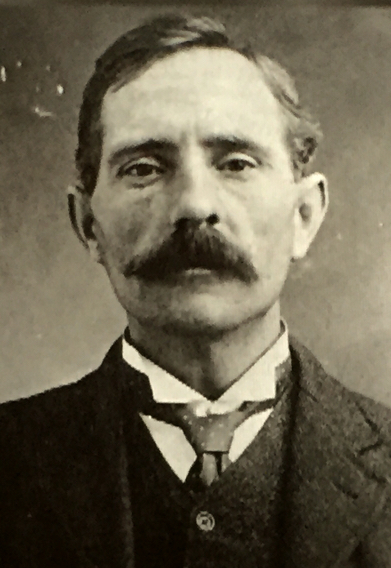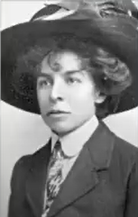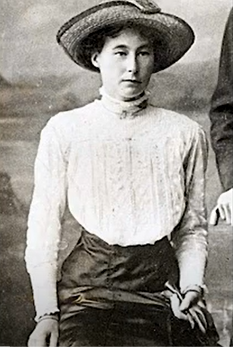
1872 - 1915
George Joseph Smith
Summary
Name:
George Joseph SmithNickname:
Brides in the Bath MurdersYears Active:
1912 - 1914Birth:
January 11, 1872Status:
DeceasedClass:
Serial KillerVictims:
3Method:
DrowningDeath:
December 13, 1915Nationality:
United Kingdom
1872 - 1915
George Joseph Smith
Summary: Serial Killer
Name:
George Joseph SmithNickname:
Brides in the Bath MurdersStatus:
DeceasedVictims:
3Method:
DrowningNationality:
United KingdomBirth:
January 11, 1872Death:
December 13, 1915Years Active:
1912 - 1914Date Convicted:
July 1, 1915bio
George Joseph Smith was born on January 11, 1872, in Bethnal Green, London. He was the son of an insurance agent. At the age of nine, due to bad behavior, he was sent to a reformatory school in Gravesend, Kent. He left the reformatory at six years old, and eventually fell into a life of crime.
As a young man, Smith was charged with various offenses, including fraud and theft. In 1896, he was sentenced to 12 months in prison for convincing a woman to steal money from her employers. After his release, he opened a bakery in Leicester using the stolen money.
In 1898, under the name George Oliver Love, he married Caroline Beatrice Thornhill in Leicester. This was his only legal marriage. After their wedding, they moved to London, where Caroline worked as a maid. She began stealing from her employers to support Smith. However, she was caught and served a 12-month sentence. After her release, she implicated Smith, leading to his imprisonment for two years starting in January 1901. Following his release, Caroline left for Canada.
In June 1908, Smith married again, this time to Florence Wilson, a widow from Worthing. Yet, just a month later, he stole £30 from her savings account and her other belongings before abandoning her. Later in July 1908, he married Edith Peglar after placing an advertisement for a housekeeper. Smith often disappeared for long stretches, claiming he was selling antiques in other cities.
In October 1909, he married Sarah Freeman, again under the name George Rose Smith. He left her as he had with the others, taking £400 from her savings and selling her war bonds. Over the next few years, Smith entered into several bigamous marriages, stealing from each of them before disappearing once again. Between 1908 and 1914, he married seven women, often using aliases.
murder story
In January 1915, police received a letter from Joseph Crossley, who suspected something strange about the deaths of two women. The deaths of Margaret Elizabeth Lloyd and Alice Smith had been reported in newspapers, and Crossley noted the similarities. Both women were found dead in bathtubs shortly after their husbands had taken out life insurance policies on them. This prompted Detective Inspector Arthur Neil to investigate further.
Neil visited the house where Margaret Lloyd had died. He found it suspicious that she could drown in a bathtub that was nearly full of water. There were few signs of violence except for a small bruise on her arm. Neil learned that Margaret had changed her will just hours before her death, with her husband as the sole beneficiary. Additionally, the insurance policy taken out on her life raised further red flags.

As Neil gathered more information, he found that Alice Smith had also died under similar circumstances. Her husband had also taken out a life insurance policy on her and stood to benefit when she passed away. Neil suspected that the same man was involved in both cases. On February 1, 1915, Neil confronted a man who matched the description of the husband, John Lloyd, and discovered that he was actually George Joseph Smith, a bigamist with multiple wives.
With Smith in custody, pathologist Bernard Spilsbury was brought in to examine the bodies of the victims. Upon exhumation, it became evident that they had died in similar ways. In both cases, there were no clear signs of struggle or poison, which made the deaths perplexing. Spilsbury conducted experiments to replicate how the women might have drowned.
Meanwhile, police uncovered a third victim, Beatrice Mundy, who had also been married to Smith. She had died in similar circumstances, further connecting the crimes. As Spilsbury studied the evidence, he theorized that Smith had a method for causing the women to drown without leaving marks of struggle. This hypothesis was based on how the women were found in the tub and the lack of signs of violence.

George Joseph Smith was formally charged with the murders of all three women and went on trial in June 1915. The trial revealed the patterns of deceit and murder, painting Smith as a cold-hearted killer who profited from his wives’ deaths. He was found guilty and sentenced to death.
On August 13, 1915, George Joseph Smith was executed by hanging. His case became famous for the gruesome and unusual pattern of the murders, known as the "Brides in the Bath Murders." The investigation and trial set an important precedent in using similarities between crimes to establish a pattern of behavior, changing how such cases were handled in the future.